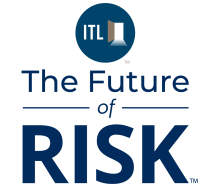As property insurance markets continue to harden, brokers and agents face an increasingly challenging landscape when seeking coverage for clients with water damage history or aging infrastructure. Some properties have experienced such severe claims that they've become what some in the industry refer to as uninsurable or severely impaired, where the challenge is not about getting an affordable premium but simply being able to get insurance coverage in the first place.
However, innovative technology solutions are emerging that can help transform these high-risk properties into insurable assets, providing brokers with powerful tools to secure coverage and favorable terms for their most challenging clients.
The Scale of the Water Damage Problem
Non-weather-related water damage accounts for approximately $13 billion in annual property insurance losses in the U.S., making it one of the most significant drivers of property insurance claims, with claims over $50,000 doubling since 2015. In commercial and multi-unit residential buildings, the effects are even more severe. The average water leak in New York City costs between $65,000 and $95,000, with damage often cascading through multiple floors before detection.
A 26-story mid-town condominium experienced this firsthand when multiple water incidents led to their insurance premiums skyrocketing from $150,000 annually to $850,000. Properties with such claim histories find themselves in the excess insurance market, where top-tier insurers simply won't provide coverage, forcing owners to alternative carriers with significantly higher costs and reduced service levels.
Point-of-Leak Detection as Market Leverage
The emergence of reliable point-of-leak detection technology has created opportunities for brokers to present compelling risk mitigation cases to underwriters. Unlike flow-based systems that attempt to detect unusual water usage patterns across entire buildings, point-of-leak sensors are placed directly at high-risk locations where leaks typically originate.
These systems can detect water within seconds and initiate live operator calls to building management within a minute, providing specific location information such as, "There's a leak under the washing machine in Apartment 4J." This immediate response capability fundamentally changes the risk profile of a property.
The proof is in the performance data. For example, in 2024, ProSentry systems caught 3,610 leaks with zero false alarms and zero insurance claims. This track record demonstrates to underwriters that properly implemented detection systems can virtually eliminate water damage claims.
Implementation Blueprint for Brokers
When presenting smart leak detection solutions to clients and underwriters, brokers should focus on three key elements:
Comprehensive Coverage: Effective systems must provide building-wide protection, not just individual unit monitoring. Leaks can originate in neighboring units or several floors above, and standalone detectors are often unable to detect or alert to those risks. Insurers increasingly recognize that comprehensive monitoring that adapts to real-world building dynamics is essential for meaningful risk reduction.
Professional Monitoring: While consumer-grade products from big box retailers may offer basic detection, insurers increasingly prioritize full-building solutions that go far beyond app notifications. Systems with 24/7 monitoring services and live operator calls promote immediate response, often supported by building staff.
Automatic Response Capabilities: Advanced systems include automatic shutoff valves that can isolate water sources when leaks are detected. While complete building shutoffs aren't practical for some multi-tenant properties, strategic valve placement allows for isolated response - if a leak occurs, water to that specific area can be shut off while building staff responds.
Quantifiable Insurance Benefits
The insurance industry has begun formally recognizing these risk mitigation investments. Some major insurers now offer premium discounts or lower deductibles for buildings with comprehensive leak detection systems, representing industry acknowledgment that properly implemented detection systems significantly reduce claim risk.
Beyond premium discounts, these systems help properties escape the uninsurable or severely impaired designation. For example, the 26-story mid-town condominium, after implementing comprehensive detection, saw their next insurance premium reduced by $300,000, with their broker successfully arguing to carriers that "We've done our best to mitigate any kind of risk."
Comprehensive Risk Management Approach
Another recent example of implementing risk management to lower property insurance premiums is from a leading Atlantic City casino hotel. Facing a challenging $5 million premium increase over five years due to water damage claims, the hotel casino invested less than $70,000 in comprehensive monitoring systems and ultimately saved close to $5 million through increased carrier competition and improved terms.
The most effective approach combines water detection with broader building monitoring capabilities. Modern platforms can monitor for gas leaks, oil leaks, temperature fluctuations, humidity levels, mechanical malfunctions, and even unauthorized smoking or vaping. This comprehensive approach demonstrates to underwriters a commitment to holistic risk management and property protection.
Moving Forward in a Challenging Market
As insurance markets continue to tighten, brokers who can present clients with concrete risk mitigation strategies gain significant competitive advantages. What's more, some in the industry are already anticipating that we'll soon get to the point where insurance companies will require these systems whether or not a building has a history of water leaks.
Smart leak detection technology provides brokers with a powerful tool to transform previously uninsurable properties into attractive risks. By demonstrating risk management through quantifiable protection measures, brokers can secure coverage for challenging clients while positioning themselves as innovative solution providers in an increasingly difficult market.
The key is presenting these systems not as additional costs but as insurance enablement tools that open doors to coverage and favorable terms that would otherwise be impossible to achieve.






